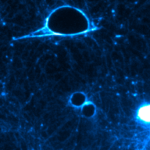Link to Pubmed [PMID] – 36136581
Link to DOI – 10.3390/toxins14090644
Toxins (Basel) 2022 Sep; 14(9):
Although botulinum neurotoxins (BoNTs) are among the most toxic compounds found in nature, their molecular mechanism of action is far from being elucidated. A key event is the conformational transition due to acidification of the interior of synaptic vesicles, leading to translocation of the BoNT catalytic domain into the neuronal cytosol. To investigate these conformational variations, homology modeling and atomistic simulations are combined to explore the internal dynamics of the sub-types BoNT/A1 (the most-used sub-type in medical applications) and BoNT/E1 (the most kinetically efficient sub-type). This first simulation study of di-chain BoNTs in closed and open states considers the effects of both neutral and acidic pH. The conformational mobility is driven by domain displacements of the ganglioside-binding site in the receptor binding domain, the translocation domain (HCNT) switch, and the belt α-helix, which present multiple conformations, depending on the primary sequence and the pH. Fluctuations of the belt α-helix are observed for closed conformations of the toxins and at acidic pH, while patches of more solvent-accessible residues appear under the same conditions in the core translocation domain HCNT. These findings suggest that, during translocation, the higher mobility of the belt could be transmitted to HCNT, leading to the favorable interaction of HCNT residues with the non-polar membrane environment.



